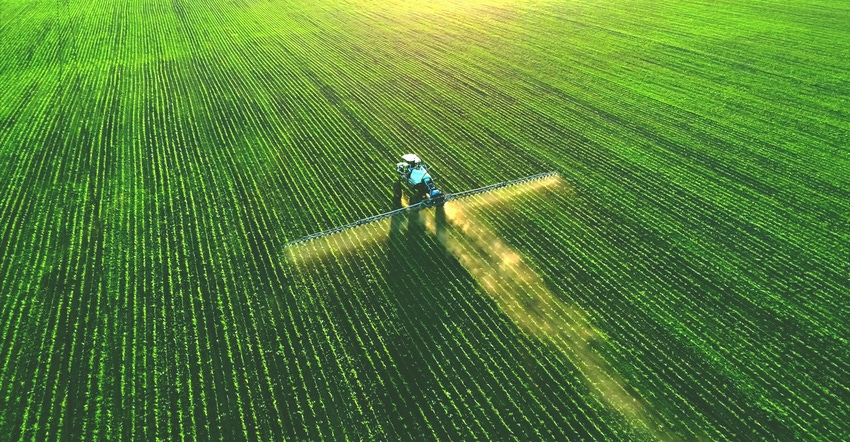May 28, 2021

As Minnesota producers and applicators work in the fields this spring and summer, it’s important to remember that to protect water quality, several pesticides require a setback between the application area and water resources.
These setbacks may be for mixing and loading, application, or all three. Be sure to check the pesticide labels for more details.
Herbicides of particular concern in Minnesota due to detection in surface water include atrazine and acetochlor. Herbicides that have been detected in groundwater include atrazine, acetochlor, metolachlor and metribuzin. These herbicides can be found in numerous products as the main active ingredient or as part of a premix.
Atrazine
Atrazine has the potential to leach to groundwater and run off to surface water. Leaching concerns are greatest on coarse-textured soils such as sands, loamy sands, and sandy loams. Be sure to check the label, because recommended rates can vary by soil type. Limit atrazine rates in fields with features such as sinkholes that allow the rapid movement of surface water and chemicals to the groundwater. Do not mix, load or apply within 50 feet of wells (active or abandoned) or sinkholes.
To protect surface water from atrazine runoff, labels specify the following:
• Do not apply within 66 feet of points where runoff enters perennial or intermittent streams and rivers.
• Do not apply within 200 feet of natural or impounded lakes and reservoirs.
• Do not mix or load within 50 feet of streams, lakes or reservoirs.
• Do not apply within 66 feet of tile surface inlets unless immediately incorporated to depth of 2 to 3 inches, or used in a no-till crop system.
Acetochlor
Acetochlor label setbacks include the following:
For groundwater protection, do not apply within 50 feet of any well if the depth to groundwater is 30 feet or less for the following soil types:
• sandy soils with less than 3% organic matter
• loamy sands with less than 2% organic matter
• sandy loams with less than 1% organic matter
For surface water protection, do not mix or load this product within 50 feet from perennial or intermittent streams and rivers, and natural or impounded lakes and reservoirs.
Metolachlor
Metolachlor setbacks include the following:
• Do not mix or load within 50 feet of perennial or intermittent streams and rivers, and natural or impounded lakes and reservoirs.
• Do not mix, load or apply within 50 feet of wells (active or abandoned), drainage wells and sinkholes.
Metribuzin
The metribuzin label does not have setback requirements, but this product can be prone to leaching. Be sure to follow label application rates based on soil type and organic matter content.
Premixes
In a premix, setbacks must be followed for the most restrictive active ingredient. Regardless if a product is applied preemergence or postemergence to the crop, setback requirements must be followed. Note there are many other products besides the ones mentioned here that require a setback, so be sure to review all product labels before application.
For more information on pesticide best management practices, visit bit.ly/mdapesticidemgmt.
For more detailed herbicide best management practices to protect water quality, visit bit.ly/mdaherbicidemgmt.
Haugen-Brown is a University of Minnesota Extension educator and co-coordinator in pesticide safety and environmental education. Stahl and Peltier are Extension educators in crops. VanLieshout is with the Minnesota Department of Agriculture.
You May Also Like




